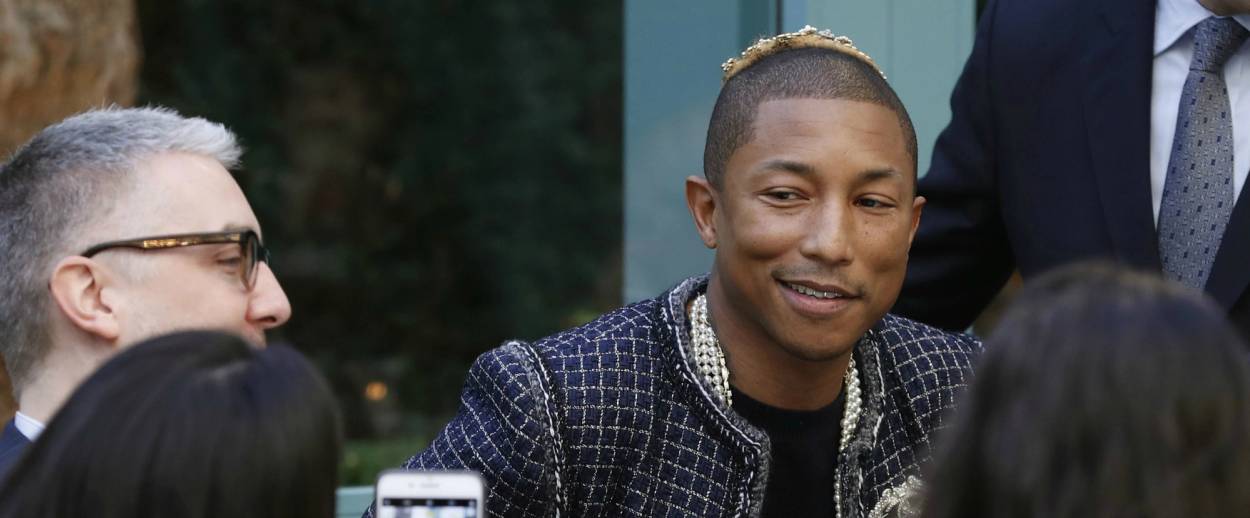Pharrell Sports a Chanel Kippah (or Something Like That)
The world of fashion has the power to unite. Make it so.




With hate crimes on the rise in certain areas of the U.S.—and swastikas festooning churches and playgrounds and college dorms, and women in hijabs being assaulted in public places—visual indicators of solidarity with disenfranchised or at-risk groups are more important than ever. Some people choose to wear safety pins, designating themselves as a “safe space,” or an individual anyone can go to for help or understanding. Others, including the new neighbors of Vice President-Elect and Homphobe-in-Chief Mike Pence, have chosen to fly rainbow flags outside their homes as symbols of tolerance (and as message to Pence).
For his part, Pharrell Williams, music producer extraordinaire, chose to wear what appeared to be a yarmulke at the Chanel show in Paris this week. Or rather, he was chosen to wear it: Pharrell was a surprise celebrity model on the star-studded proverbial runway (the show was actually held in the genteel environs of the tea room at the Ritz). No ordinary yarmulke, the accessory perched that apex of Pharrell’s head—itself a host to all manners of fanciful toppers over the years (I’m still obsessed with that giant Canadian Mountie style hat he wore to the Grammys)—was adorned with gold trim and what appeared to be clusters of signature Chanel pearls; nothing, after all, is too good for God, I guess.
As Vogue notes, it’s not the first time fashion has appropriated aspects of religious garb into its oeuvre: Dolce & Gabbana have produced a line of hijabs and abayas for religious (and wealthy) Muslim women; H&M featured a hijab-wearing model in a recent campaign, and who of course, who could forget the bindi trend of the late ‘90s? (I can’t due to embarrassing photographic evidence my mother stubbornly refuses to destroy.) Jewish apparel in the religious rather than cultural sense—or else everything Donna Karan ever designed for Barbra Streisand would count—has had its turn as well: Remember Jean-Paul Gaultier’s “Rabbi Chic” collection of 1993, with those gorgeous long overcoats, fur hats, and models in side curls?
But Pharrell’s little gesture, provided that was how it was intended, is a promising sign. Maybe I’m just tired of feeling so awful and angry all the time, but it’s possible that fashion is moving to a place of greater inclusiveness, to a place where visual references to other cultures will be not just appropriated, but genuinely appreciated. As the world becomes a less tolerant and more xenophobic place in its official halls, it’s up to the culture makers, who are by and large a creative bunch mostly prejudiced against people with bad taste, to lead the way with a banner of hope for all those who feel forgotten and unwelcome. Or maybe just with a bejeweled yarmulke.
Previous: Fashion Forward
Rock That Tallit
Rachel Shukert is the author of the memoirs Have You No Shame? and Everything Is Going To Be Great,and the novel Starstruck. She is the creator of the Netflix show The Baby-Sitters Club, and a writer on such series as GLOW and Supergirl. Her Twitter feed is @rachelshukert.